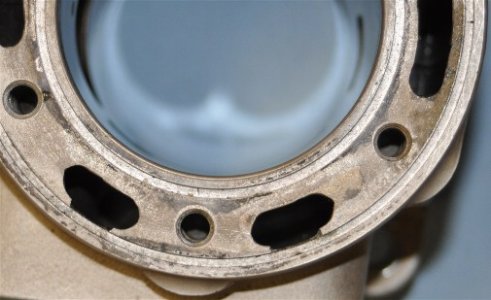I've just pulled off my cylinder to do a top end job and noticed that the lip of two of the coolant ports adjacent to the outer cylinder head O-ring have small pieces of the cast missing!!
When I removed the Cylinder head, the O ring was still intact in these areas and I've had no exterior coolant seepage whatsoever.
You can note the pieces missing on the bottom left and bottom right coolant paths.
The question I have for the cylinder experts here is simply, do I need to send the cylinder in to have those lips welded back on, given that I have experienced no external coolant seepage and there is no compromise to the internal o ring?
Looking forward to your thoughts.
Thanks!
When I removed the Cylinder head, the O ring was still intact in these areas and I've had no exterior coolant seepage whatsoever.
You can note the pieces missing on the bottom left and bottom right coolant paths.
The question I have for the cylinder experts here is simply, do I need to send the cylinder in to have those lips welded back on, given that I have experienced no external coolant seepage and there is no compromise to the internal o ring?
Looking forward to your thoughts.
Thanks!
Attachments
Last edited:

